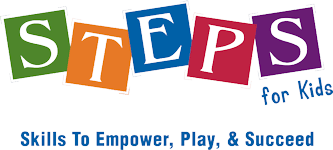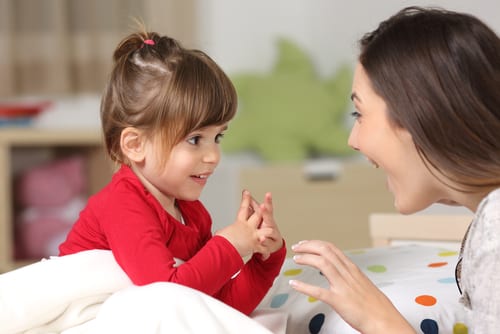Is your toddler starting to talk but speaking a “different language”? No worries! It’s a common phenomena of language development called “jargon.” Lots of young children engage in this kind of “babble-speak” as they learn how to use language effectively. Recent research has highlighted the importance of not just talking to your child but talking with them, with evidence of structural brain changes that contribute to developing skills for language and literacy. The most important thing is to engage your child in conversation – whether you understand what they are saying or not! Here are 4 ways to engage your child in that ever important skill of conversation:
- Respond to your child’s communication attempts even if you don’t get a single word that is being said. Your child is trying to tell you something and if the communication attempt is acknowledged by you, they will surely attempt more communication with you in the future. Your response could be a simple head nod, or a comment such as “you’re right”, “I see”, “really?”. Make sure you make eye contact and interact as though your child is saying something very interesting.
- Be a detective and try to figure out what they might be talking about and reply back with Doing a little detective work enhances the back and forth exchanges and helps you better understand your child. Being a detective, you can: follow your child’s eye gaze while they are speaking or read the gestures that go along with the “talking” to see if you can figure out the subject of the conversation. You can also look around to find a possible source of the topic of conversation (ie., maybe a school bus just drove by or a favorite character is on tv). If you can’t figure it out, make something up that might be relevant to the current situation, say what you think they would be saying to you and see what kind of response you get. Need an example of how to chat it up with a child you don’t understand? Check out this adorable video of a dad and his baby enjoying television together! Great detective work and conversation going on there!
- Know the topic but the sentence doesn’t make sense? Model the sentence back to the child so they can hear how it is supposed to sound. To do this, you just slowly repeat the sentence or phrase you think they said using 2-3 words while making eye contact. Then ask your child to say it again with you to help improve their accuracy. Be affirming and encouraging as you provide the model. For example, “Oh, yes! you are right! The bus is big!” Follow it up with a question or another comment on the same topic to keep the conversation going.
- Ask follow up questions or add your own comments. If you know the subject of the conversation you are having, ask your child follow-up questions about the topic and model answers or give choices for answers to the questions. For example., “I see the car. What color is the car? Is it blue or green?”, “You see the puppy? He’s a big puppy! What does the puppy say?” Show interest and enthusiasm in what your child wants to tell you. This helps the child feel connected and keeps them engaged in the conversation. Giving a response will build a desire in your child to respond back to you and conversations will flow!
As you can see, you don’t need to be speaking the same “language” to have a fun, interactive conversation with your child and it can be encouraging for your child to have these discussions with you. This is how your child learns more than just how to say words but also social skills such as taking turns in conversation, making eye contact, using gestures and changing the inflection of his/her voice. Having conversations builds relationships, connects us all socially, and supports future literacy skills. Enjoy these little talks with your child and have fun!
Wonder if your child would benefit from speech therapy? Contact us today to discuss your concerns and learn more about our services. 630-552-9890

